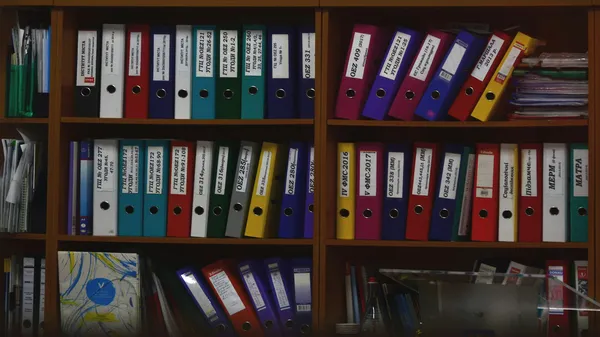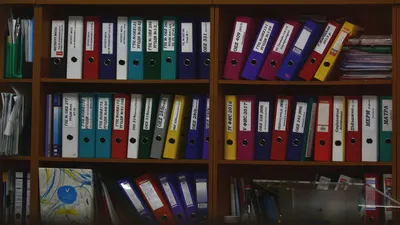In an era when digital transformation is reshaping every sector, Aadhaar has taken another confident stride forward. The Unique Identification Authority of India (UIDAI) recently introduced a groundbreaking feature – a paperless offline e-KYC verification process. This innovative system is set to revolutionize how personal identification data is shared, making the process not only faster and more secure but also more accessible for millions. Whether you are opening a bank account, applying for government services, or simply need to verify your identity, this new system promises a smoother, hassle-free experience.
A New Chapter in Digital Identity Verification
Traditionally, identity verification meant a mountain of paperwork, manual checks, and multiple visits to branches or offices. But as digitalization takes over, Aadhaar’s latest offering seeks to eliminate these outdated practices. With paperless offline e-KYC, the tedious documentation process is replaced by a seamless digital solution that can be executed without an active internet connection.
What Does Paperless Offline e-KYC Mean?
Simply put, the paperless offline e-KYC is an electronic Know Your Customer (e-KYC) process that doesn’t require physical documents or real-time online connectivity. Here’s a closer look at what this entails:
- Paperless Verification: Gone are the days of printing and signing countless forms. The new system uses Aadhaar data securely stored on your device to confirm your identity.
- Offline Functionality: Whether you’re in a rural village with limited connectivity or in a busy urban area, you can perform e-KYC verification without needing to be constantly connected to the internet.
- Enhanced Security: Powered by advanced encryption and robust security protocols, the offline e-KYC adheres to strict privacy measures, ensuring that your data remains safe and confidential.
This transformative approach simplifies identity verification while reducing the risk of data breaches linked to physical documents being lost or tampered with.
How the New System Works
UIDAI’s offline e-KYC is designed to be both user-friendly and highly efficient. Here’s a detailed breakdown of how it works:
1. Initiation of the e-KYC Process
When you decide to avail any service requiring identity verification—be it opening a bank account, applying for a loan, or subscribing to utility services—the process begins with a simple digital prompt. You provide your Aadhaar number and, if required, a one-time password (OTP) for added security.
2. Data Retrieval and Storage
Once your Aadhaar number is authenticated, the system retrieves your identity details from the Aadhaar database. The data is then temporarily stored on a secure device or app. Because the process is offline, this data is encrypted and saved locally, allowing you to complete the verification without depending on real-time network connectivity.
3. Secure Offline Verification
At the point of service, the offline e-KYC feature verifies your stored data against what is required by the service provider. This matching occurs without transmitting your personal details over the internet, thereby minimizing exposure to cyber threats. The verification status is then immediately confirmed, allowing you to move forward with your application.
4. Completion and Data Disposal
After your identity is successfully verified, your device automatically purges the temporary e-KYC data. This ensures that sensitive information isn’t stored longer than necessary and aligns with stringent privacy regulations aimed at protecting your data.
The Benefits of Going Digital with Offline e-KYC
The introduction of paperless offline e-KYC verification brings several significant advantages to both consumers and service providers:
For Consumers
- Convenience and Speed: No more waiting in long queues or shuffling through piles of documents. The entire process is digitally streamlined, making it easier and faster than ever.
- Accessibility in Remote Areas: Even regions with limited internet connectivity can now access digital identity verification, bridging the gap between urban and rural services.
- Enhanced Privacy: With data stored temporarily and cleared immediately after verification, the risk of sensitive information being misused is drastically minimized.
- Cost-Effective: By eliminating the need for physical paperwork, both direct costs (like printing and transportation) and indirect costs (like time saved) are significantly reduced.
For Service Providers
- Operational Efficiency: Banks, telecom companies, and government agencies can process KYC verifications faster and with fewer errors.
- Reduced Fraud Risk: The secure and encrypted nature of offline e-KYC limits opportunities for identity fraud and document forgery.
- Regulatory Compliance: With data protection at its core, the new system helps organizations comply with national standards and international data protection regulations.
- Streamlined Onboarding: Service providers can offer a seamless onboarding experience to new customers, boosting user satisfaction and reducing dropout rates.
Real-World Impact: A Story of Transformation
To understand the significance of this innovation, consider the experience of Neha, a small business owner from a semi-urban area. Previously, Neha had to travel long distances, taking multiple documents and waiting in long queues at government offices just to get her identity verified for a bank loan. The process was time-consuming and often left her frustrated with bureaucratic delays.
With the introduction of offline e-KYC, Neha no longer has to worry about gathering heaps of paperwork or enduring lengthy verification procedures. All she needs is her smartphone with the updated Aadhaar app. Within minutes, her details are verified off-line, and she can focus on growing her business rather than being bogged down by administrative formalities. Neha’s story resonates with millions of Indians who now have an efficient and hassle-free way to prove their identity, no matter where they are.
Security: The Heart of Offline e-KYC
One of the major concerns with digital systems is always security. Aadhaar’s new offline e-KYC procedure is no exception, but it has been designed with multiple layers of security in mind:
- Encryption Standards: All data retrieved from the Aadhaar database is encrypted immediately. This encryption ensures that even if unauthorized access occurs, the data remains unreadable.
- Temporary Storage: The system’s architecture only allows data to be held temporarily on your device for the duration of the verification process. Once the procedure is completed, the data is automatically wiped from the device.
- Strong Authentication Procedures: The use of one-time passwords (OTP) and biometric verifications, when needed, boosts the reliability of the process.
- Compliance with Data Protection Norms: Aadhaar’s offline e-KYC adheres strictly to national data protection laws, ensuring user data is handled with the utmost responsibility and care.
By focusing on robust security measures, UIDAI has addressed one of the most critical aspects of any digital transformation initiative, reassuring both consumers and businesses about the integrity of the system.
A Digital Leap Forward for India
Aadhaar’s push for a paperless offline e-KYC solution is more than just an upgrade—it’s a bold statement about the future of digital India. Here are some broader implications of this development:
Bridging the Urban-Rural Divide
India’s diverse socio-economic landscape has long posed challenges in ensuring that everyone has equal access to digital services. With offline e-KYC, even those in remote areas without reliable internet connectivity can now participate in the digital economy. This innovation paves the way for a more inclusive financial ecosystem, where every citizen gets an equal opportunity to access government services, bank loans, and more.
Boosting the Fintech Revolution
In the burgeoning fintech space, speed and efficiency are paramount. Banks and financial institutions can now leverage offline e-KYC to onboard customers faster, reduce operational costs, and minimize human error. This leads to a more robust and agile financial environment where innovation thrives and customer satisfaction is at an all-time high.
Enhancing Government Service Delivery
Government agencies, too, stand to gain remarkably. With secure, paperless verification, enrollment in government schemes and benefit distribution becomes smoother and more transparent. This can lead to higher participation rates in welfare programs and greater overall trust in government-run initiatives.
How to Get Started with Offline e-KYC
For those who are new to digital identity verification, getting started with offline e-KYC is straightforward. Here’s a simple guide to help you make the transition:
Step 1: Update Your Aadhaar App
Ensure that you have the latest version of the Aadhaar app installed on your smartphone. This app is designed to support the offline e-KYC process and comes with user-friendly instructions.
Step 2: Verify Your Aadhaar Details
Before using the offline feature, it’s a good idea to check that all your Aadhaar details are correct. Open the app, review your personal data, and request any necessary updates if there are errors.
Step 3: Initiate the e-KYC Process
When a service request requires identity verification, select the option for offline e-KYC on the platform’s interface. You will be prompted to enter your Aadhaar number and verify your identity with an OTP or biometrics if needed.
Step 4: Complete the Verification
Follow the guided process on your device. Once your data is securely retrieved and temporarily stored, the system will verify your identity offline. After successful verification, your data is deleted from the device, leaving no trace behind.
Step 5: Stay Informed About Best Practices
As with any digital tool, staying updated on security best practices is important. Regularly check for any updates from UIDAI, and be cautious about sharing your Aadhaar details with untrusted platforms or individuals.
The Road Ahead: Future Innovations
While the launch of paperless offline e-KYC is already a monumental achievement, it is just one step on the road to a fully digital, secure, and efficient identity verification system. Here’s what we can look forward to as this technology evolves:
- Enhanced Integration: Future updates could see stronger integration of offline e-KYC across multiple government and private platforms, streamlining processes in banking, telecom, and beyond.
- User-Centric Innovations: As user feedback rolls in, expect more personalization features that make the verification process even more intuitive and responsive to individual needs.
- Broader Adoption: With its success, the offline e-KYC system could inspire other countries to adopt similar models, setting a global benchmark for paperless identity verification.
- Continual Security Enhancements: In an age where cyber threats evolve every day, ongoing improvements in encryption, user authentication, and data anonymization will keep your data safe and secure.
Final Thoughts
The introduction of Aadhaar’s paperless offline e-KYC verification is a milestone that embodies the melding of technology and governance for the greater good. By eliminating cumbersome paperwork and reducing dependency on constant internet connectivity, this innovative solution is set to make identity verification simpler, faster, and more secure.
For millions across India, this means easier access to financial services, government benefits, and a step toward a more digital and inclusive future. In an ever-changing world, embracing such technological advancements is vital to ensuring that public services keep pace with modern expectations. Whether you are a student, a professional, or a small business owner, the ease of offline e-KYC empowers you to focus on what truly matters: progress and growth.
As UIDAI continues to pave the way for digital transformation, the benefits of a paperless system extend far beyond convenience. They represent a commitment to security, transparency, and accessibility—a promise that every citizen’s identity is not just a number, but a key to unlocking opportunities without compromising privacy.
Stay informed, embrace these technological shifts, and be part of the movement that is redefining identity verification in India. With digital innovation at the helm, the future of secure, seamless, and inclusive verification has never looked more promising.
Welcome to the new era of identity verification—smart, secure, and entirely paperless.




.webp)

.webp)



.webp)
.webp)
.webp)
.png)